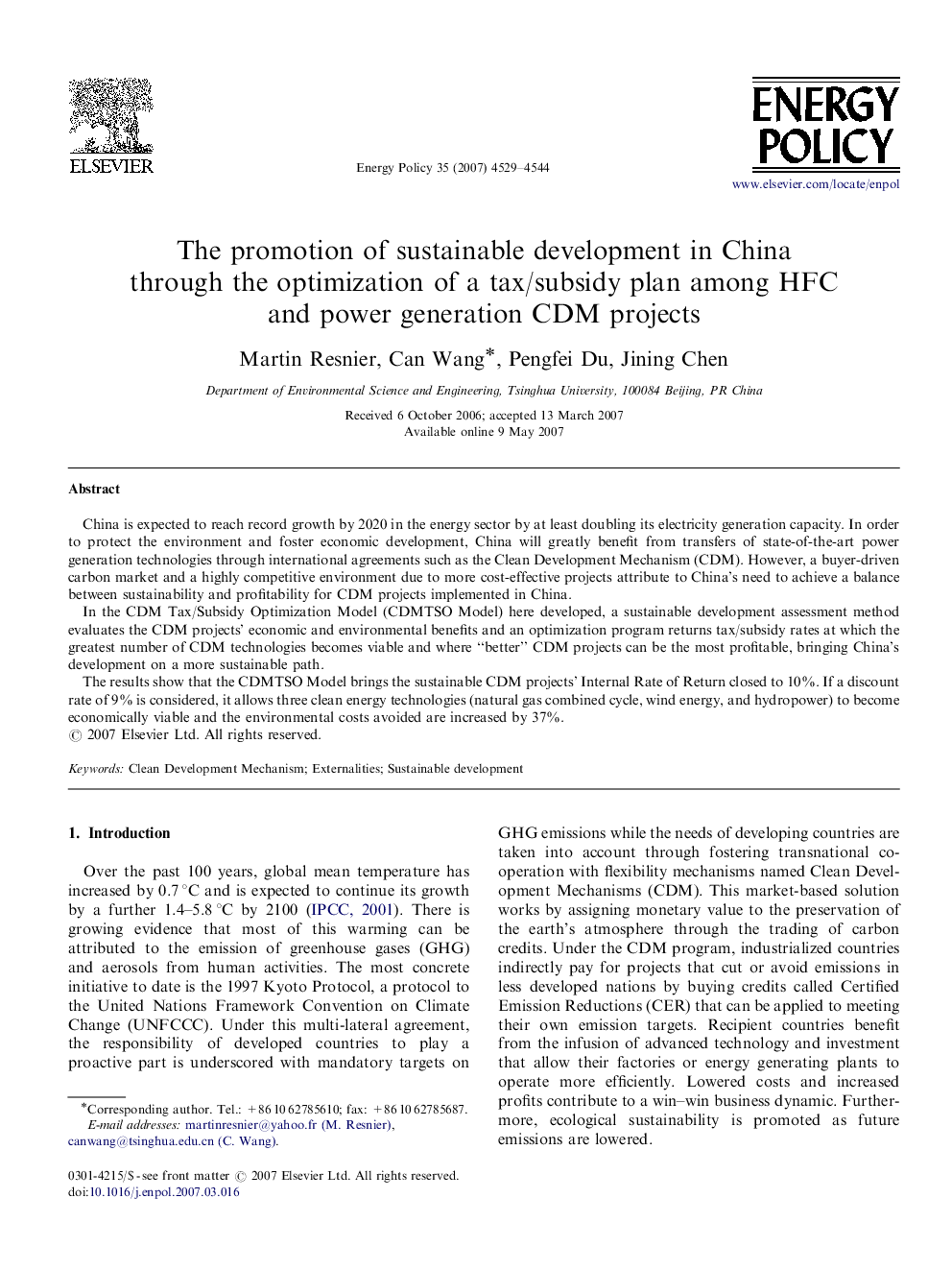| Article ID | Journal | Published Year | Pages | File Type |
|---|---|---|---|---|
| 997239 | Energy Policy | 2007 | 16 Pages |
China is expected to reach record growth by 2020 in the energy sector by at least doubling its electricity generation capacity. In order to protect the environment and foster economic development, China will greatly benefit from transfers of state-of-the-art power generation technologies through international agreements such as the Clean Development Mechanism (CDM). However, a buyer-driven carbon market and a highly competitive environment due to more cost-effective projects attribute to China's need to achieve a balance between sustainability and profitability for CDM projects implemented in China.In the CDM Tax/Subsidy Optimization Model (CDMTSO Model) here developed, a sustainable development assessment method evaluates the CDM projects’ economic and environmental benefits and an optimization program returns tax/subsidy rates at which the greatest number of CDM technologies becomes viable and where “better” CDM projects can be the most profitable, bringing China's development on a more sustainable path.The results show that the CDMTSO Model brings the sustainable CDM projects’ Internal Rate of Return closed to 10%. If a discount rate of 9% is considered, it allows three clean energy technologies (natural gas combined cycle, wind energy, and hydropower) to become economically viable and the environmental costs avoided are increased by 37%.
